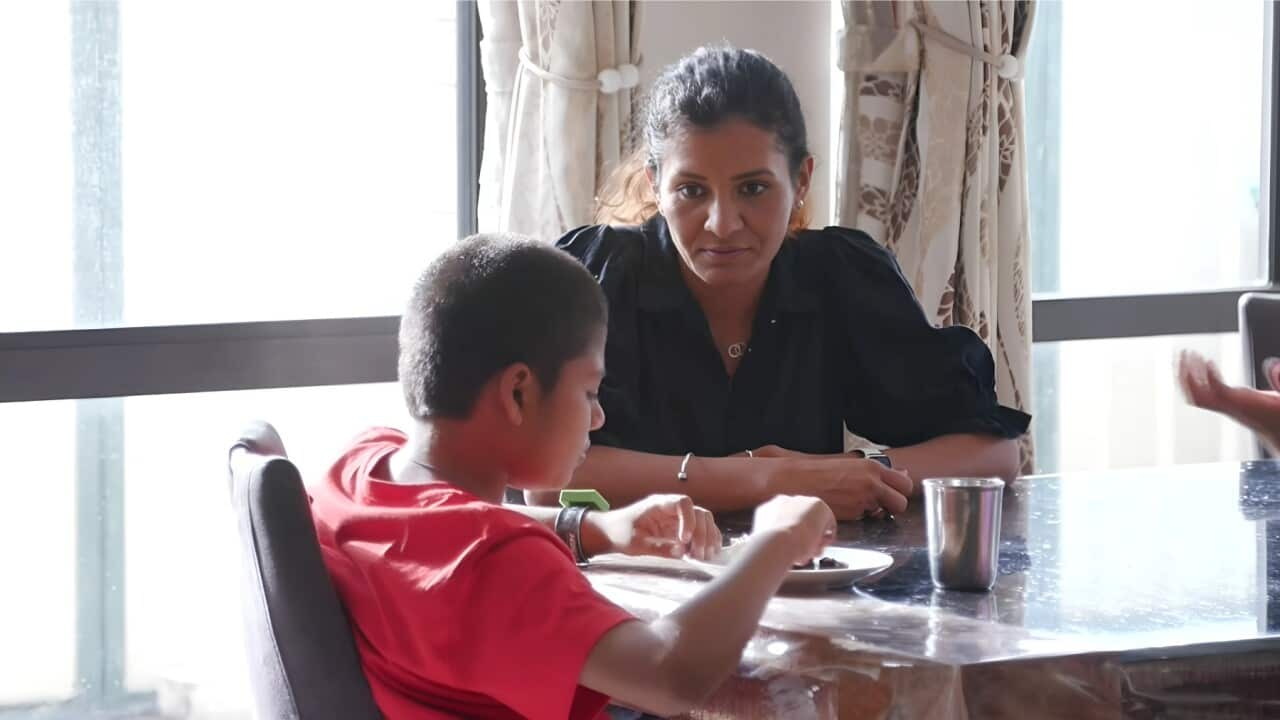TRANSCRIPT
A new COVID-19 subvariant is causing a spike in cases in some parts of the world, and experts believe it is likely already circulating in the Australian community.
The new coronavirus variant has been dubbed Eris, or EG.5.1, and was reportedly first detected in Asia.
It is part of the Omicron sublineage and part of the E-G.5 group, which was listed as a variant under monitoring by the World Health Organisation in July.
Associate professor Paul Griffin is an infectious disease physician and clinical microbiologist.
He believes the subvariant has likely made its way to Australia, but has not yet been officially identified due to limited testing being done.
He says Eris appears to be on the rise around the world.
"So this is exactly what COVID has done time and time again, it continues to change and evolve and cause new problems for us. And like so many times before these early stages, we're still finding out more information. It's likely this one emerged in Asia or Indonesia some months ago, but it's certainly increased in recent times with an estimate that it's perhaps doubled in prevalence over the last four weeks or so globally from just over six to nearly 12 per cent. And it does look like it may be becoming the dominant variant or subvariant of Omicron in a number of countries, including the United States."
EG 5.1 now reportedly also accounts for one in seven cases in the United Kingdom.
The latest data from the Centres for Disease Control and Prevention [[CDC]] in the United States estimates the E-G lineage now accounts for 17.3 per cent of the country's infections.
Adrian Esterman is professor of bio-statistics and epidemiology at the University of South Australia.
He says he expects a similar pattern will follow in Australia.
"Eris appears to have a bit of an advantage in terms of transmissibility, and it's starting to take over. The most likely thing that will happen is we'll probably seeing yet another peak of cases coming up in the next few weeks, which could be due to Eris."
So what are the symptoms of the new subvariant?
Dr Esterman explains.
"It terms of its symptoms, it's not too dissimilar to the other XBB variants. You know, you've got the usual sore throat, headache, cough. It's a bit like flu like symptoms."
Symptoms of the EG.5.1 subvariant reportedly also include a runny nose, fatigue, and sneezing.
Dr Griffin says they appear to be relatively mild for most people.
“In terms of what we know about it, one of the perhaps good things about it is it does look a little bit similar in terms of the structure particularly of the spike protein to be similar to XBB 1.5. And that's a subvariant that's caused quite a few problems and it actually has a vaccine developed against it. So that certainly highlights why we need to look at rolling out that updated vaccine. And the other major thing about this one is there does appear to be a bit of a change in symptoms and you know, some of that may be impacted vaccination and past infection in its early days but I think the main thing that a lot of people are talking about is it seems to cause fever, a little bit less commonly than perhaps some other variants in some variants did previously."
Should you still be concerned about COVID-19?
According to the latest government data, 5,431 cases of COVID-19 were reported across Australia in the week to the 2nd August.
Dr Griffin says because testing rates have declined, these numbers likely only represent a fraction of the cases in the community.
"I think for many people COVID is something that's certainly not forefront in their minds at the moment. We've obviously been through a fairly significant flu season recently, and the COVID numbers do seem to have declined in recent times. So I think for many people they've lost sight of the significance of COVID."
He says while the pandemic is no longer considered a global health emergency, the threat has not gone away.
"If we look at the global figures, there's still been over a million cases in the last four weeks, over 3000 deaths. So while the public health emergency's being declared over and cases might be relatively low at the moment in Australia, it's clear that the threat hasn't gone away and particularly as we see a new emerging subvariant that may lead to an increase in cases in our country as it appears to be doing and others so we just need people I guess, to not completely lose sight of COVID to know that our vaccines still work and antivirals are still important."
For the elderly and those who have comorbidity factors, Dr Griffin suggests having a COVID-19 plan.
"You know, I think it's good to actually have a have a COVID plan. And that will include how to reduce their risk, whether that be through vaccination or other strategies. We've got some antibodies that can help with that, for example, and absolutely those groups are the ones that should be prioritised to be up to date with their vaccines and also to have a plan on how to get tested quickly. If they get symptoms how they can get antivirals, whether that be COVID or flu antivirals, but also how to manage their medical problems at those times, because there are certain medical problems with that management might need to change if they're unwell with one of these respiratory viruses. So I think having a COVID plan from your GP or specialist, being prepared is going to be the main thing for the foreseeable future."













